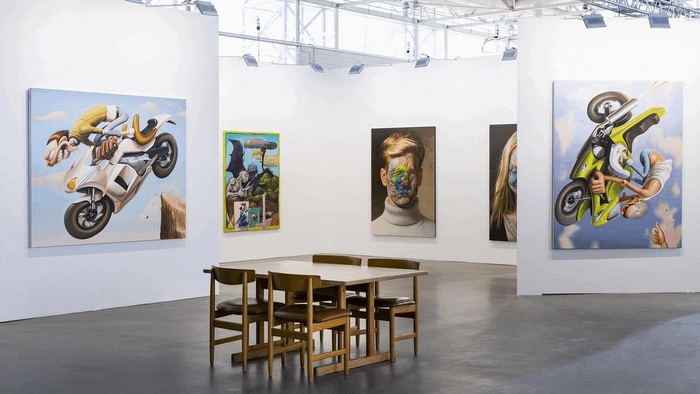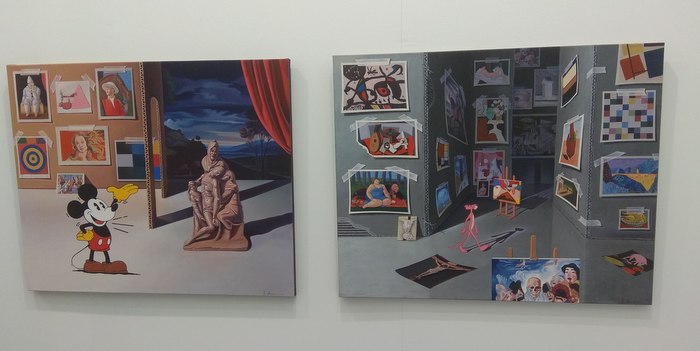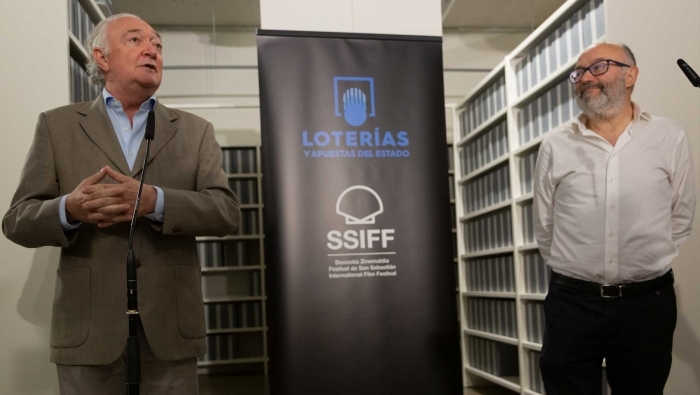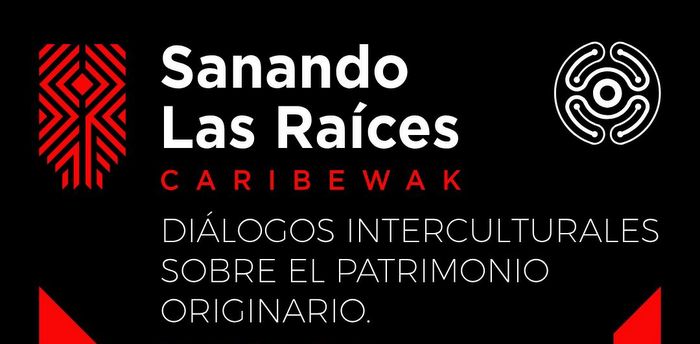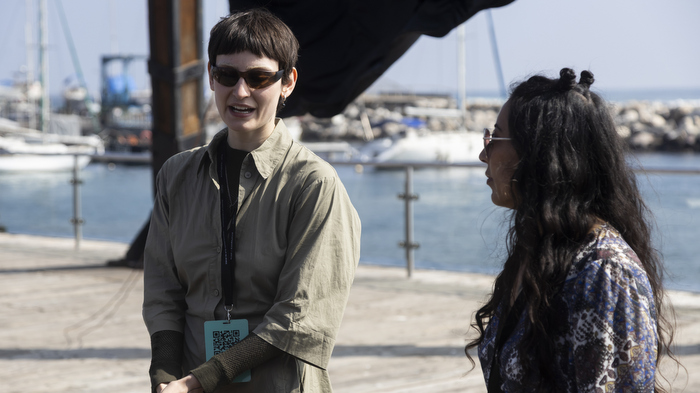Recently, the 15th edition of the ART Madrid’20 Contemporary Art Fair was held, in which 41 galleries and almost 200 artists from various countries participated, highlighting the presence of Spanish and Portuguese galleries. On the other hand, only two from the American continent have attended: Collage Havana from the Cuban capital and the Ecuadorian More Art gallery workshop from Quito, although several Latin American artists have also exhibited their works in rooms in other countries.
Likewise, a series of parallel activities to the Fair have been developed, such as Art Madrid-Proyector 20 on video art, under the curatorial office of Mario Gutiérrez, where various video artists have been involved in offering master classes, professional meetings and artist presentations, as well as performances, projections from international festivals and small theoretical-practical workshops.
In addition, the One Project program, with the title Wild. La cage aux fauves, whose curator Fernando Gómez de la Cuesta has shown a daring and transgressive commitment, developing a space for dialogue where various artists meet in a certain place to show their projects. The galleries participating in this program are DDR Art Gallery of Madrid, ATC Gallery of Santa Cruz de Tenerife, Plastic Murs of Valencia and Kaplan Projects and MA Contemporary Art of Palma de Mallorca.
Art Madrid'20's proposal is open and global, allowing the public to discover and acquire quality works at affordable prices, making it coincident with other fair events in the Spanish capital, case of ARCO, JustMad, Drawing Room, etc. It does not prevent its celebration, since each of them has its own audience. In this edition, 20,000 visitors have come to the Crystal Gallery of the Palacio de Cibeles, in the heart of the city, an influx close to previous years.
As for the artists and galleries present at the fair, I will focus only on those that concern the Ibero-American world with some proposals, in most cases, very interesting. In the first place, the Ecuadorian More Art gallery in Quito is the first time that participates in the fair. Recently founded, specifically in 2016, it is oriented to emerging art. Of the artists who have shown their works, Ecuadorians Paul Rosero and Karen Miranda stand out, through photography, where nature and human beings come together in an environment close to surrealism.
Coming from Cuba, the presence of Collage Habana stands out, which, since 2004, has led the promotion and commercialization of the visual arts of the Cuban Fund of Cultural Assets. On this occasion the young creators have shown their works: Alejandro Gómez Cangas, Gerardo Liranza and Onay Rosquet. All three exhibit oils on canvas, in which the figuration of Gómez and Liranza and the geometric abstraction of Rosquet, configure a way of representing "poetics associated with the human condition". The Temple series (2016-2018) by Liranza, seems to be extracted from the photographic field instead of the pictorial one, since it shows industrial buildings halfway between abandonment and rehabilitation. Solitude, mystery and silence nest in these constructions.

Four galleries from Portugal participate, including Paula Nunes Arte Contemporânea from Vila Franca de Xira, who has presented the work of various creators, among which the Brazilian Nina Franco stands out with two works that are intertwined as an installation, since they are hanging on the wall joined by hangers and red threads. The piece is titled Clandestinas (2019), created from painting, photography, as well as other various materials forming a conceptual work where the figure of the woman appears gagged, without having the opportunity to express her opinion.

Coming from Lisbon, the Sào Mamede gallery, with the Portuguese Susana Chasse and the Spanish González Bravo and Manuel Salinas, has shown a series of abstract paintings where the protagonist is color. The Nuno Sacramento gallery is located in the small Portuguese town of Ílhavo, close to Aveiro, a town where opened its doors in 2003, until six years later it moved to its current headquarters. At the fair, it has only presented the Porto artist Teresa Carneiro, in whose works young women appear in an expectant attitude. Some wear a mask with very large ears reminiscent of carnival masks, although they can rather be related to the animal world. Anyway, her mastery of drawing is perfectly perceived. Another Lisbon gallery is Art Lounge Gallery with artists of different nationalities, highlighting the conceptual work of Valencian Carmen Calvo and Barcelona sculptor Mireia Serra.

Regarding galleries not belonging to the Latin American arc, but exhibiting works by artists belonging to that continent, we have the Zielinsky gallery in Barcelona, with the Argentines Diego Pujal, Gonzalo Maciel and Joaquín Lalanne. Pujal exhibits his 3D prints that recall the collages of the Dadaist Jean Arp, deconstructing the geometric shapes that appear in his paintings as a puzzle. Maciel is already known by the readers of the magazine, since an article about his work was recently published in the same gallery. His work stands out for the very creative way of representing color and light, through the printing of pigmented inks on paper that produce a visual effect close to artificial lighting due to its phosphorescence. And the last Argentine is the Buenosairean Joaquín Lalanne with some oils that approach pop-art but from the current perspective, with a series of characters drawn from the comic wrapped in a museum context. The Brazilian Eduardo Marco shows a view of Istanbul far from the usual stereotypes, the case of the innumerable mosques that fill the city, since in the foreground some dilapidated buildings appear and, in the background, others stand but that may correspond to any city on the planet. The Uruguayan painter and resident in Barcelona for five decades, Yamandú Canosa, has presented a series of pieces where various geographical elements predominate, but with the particularity that he shows them from an ironic perspective.


In the Valencian gallery Alba Cabrera, the Venezuelan Maria Angélica Viso has exhibited an installation, which consists of a series of geometric pieces in anodized aluminum and stainless steel, painted in two colors: magenta and blue. She calls these pieces Organic Geometries. In the stand they were hung on the wall and randomly separated, so they can be considered mobile elements. The artist runs away from conventional geometry creating totally different shapes. The rectangle, the square or the circle do not exist in her work.

On the cover: Work of Joaquín Lalanne
Publicaciones relacionadas
